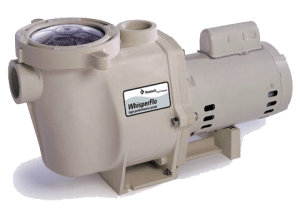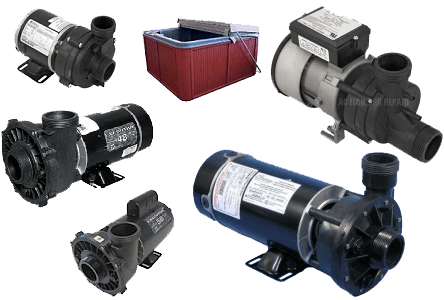Pool Pump Repair and Replacement
in La Habra, CA
Pumps for water circulation is the heart of any pool, spa or water feature. Careful consideration for selection of the correct size motor and pumping capacity is critical in whatever application a pump is being used for. An undersized pump may not deliver the necessary volume of flow needed to keep water sanitary, or it may need to run for longer periods of time to compensate. In either case, undersized pumps are usually not cost effective and overworking an undersized pump will tend to shorten its life.
When replacing a pump or parts on a pump, it’s important to obtain as much information from the existing unit to insure you receive the correct replacement item. The following information can be found on a metal or sticker nameplate usually visible on the motor and on the pump itself.
- Manufacturer & Model Number (on pump body)
- Horsepower HP (on pump motor)
- Electrical Voltage: 120V/240V (on pump motor)
- Pipe diameter of inlet & outlet ports: 1-1/2″ or 2″ (measure pipes on pump)
For new pump applications, or replacement of a pump, it’s always best to consult with your pool contractor or technician to address the best option for your personal application.
NOTE: In many cases, an old pump can be repaired at a fraction of the cost of a new pump thereby making the repair very cost effective, however in some cases the cost of the part(s) required could make purchasing a new pump complete with a full warranty a much wiser choice. Many times all that’s needed is the pump motor to be replaced along with new pump seals, especially if the pump has been excessively noisy which is an indication of failing internal bearings.
COMMON PROBLEM: One of the most common issues we find in pump failures is poor maintenance of the pump strainer basket. The job of the pump basket is to catch large debris like leaves, paper, twigs, palm seeds, etc. that gets sucked in by the skimmer or through the vacuum hose. The basket stops the debris from continuing into the pump impeller and filter. Unfortunately many homeowners (and some unprofessional pool service technicians) fail to empty and inspect this basket for cracks on a weekly basis. The basket can quickly become clogged as basket is fairly small in size. A clogged pump basket will cause higher suction due to the restriction of water flow and eventually the pump basket will split and the contained debris flows directly into the impeller, clogging it and causing other water maintenance problems related to low circulation. It’s important to not only empty the pump (and skimmer basket if so equipped) but to inspect it for damage and cracks. Gently squeeze the basket with your fingers from two or three sides to see if there are any splits that might open up. Replace baskets if there are any sign of damage, or if the basket appears brittle.


